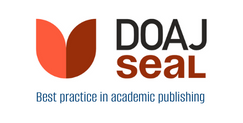Article | Open Access
The (Un)Intended Consequences of Emphasizing the Threats of Mis- and Disinformation
| Views: | 2445 | | | Downloads: | 2047 |
Abstract: The mis- and disinformation order does not only consist of the dissemination of deceptive content but also involves using fake news as a blame-shifting label in politics and society. The salience of this label on social media and in political discourse, and the frequent discussions held about the threats of fake news in public opinion, may result in a systematic overestimation of mis- and disinformation’s presence. Even more so, these primed perceptions about false information may affect people’s evaluations of factually accurate information. In this article, we offer a theoretical account of how the public’s and media’s attention to mis- and disinformation, fake news labels, and the threats of mis- and disinformation may have a negative impact on people’s trust in factually accurate information and authentic news. In addition, relying on an experimental case study of pre-bunking interventions, we illustrate the extent to which tools intended to increase media literacy in the face of mis- and disinformation may also have ramifications for trust in reliable information. Based on this, we propose a forward-looking perspective and recommendations on how interventions can circumvent unintended consequences of flagging false information.
Keywords: credibility; disinformation; fake news; media literacy; misinformation; truth bias
Published:
Supplementary Files:
© Michael Hameleers. This is an open access article distributed under the terms of the Creative Commons Attribution 4.0 license (http://creativecommons.org/licenses/by/4.0), which permits any use, distribution, and reproduction of the work without further permission provided the original author(s) and source are credited.




